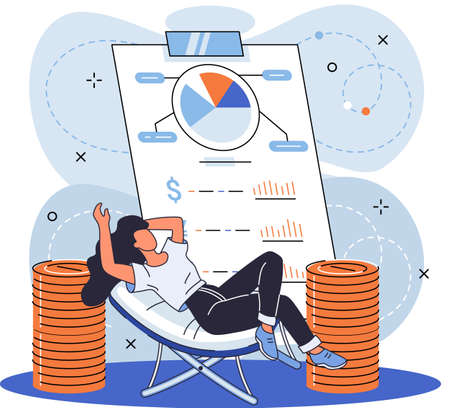1. Understanding Credit Card Utilization
Credit card utilization is a key factor in determining your credit score. It refers to the percentage of your total available credit that you are currently using. Understanding how it works and why it matters can help you make smarter financial decisions.
What Is Credit Card Utilization?
Credit card utilization, also known as the credit utilization ratio, is the amount of credit youre using compared to your total credit limit. Lenders use this metric to assess how responsibly you manage credit.
How Is Credit Card Utilization Calculated?
Your credit utilization is calculated by dividing your total outstanding balance by your total credit limit and multiplying by 100 to get a percentage.
Example Calculation
| Total Credit Limit | Current Balance | Utilization Percentage |
|---|---|---|
| $10,000 | $3,000 | (3,000 ÷ 10,000) × 100 = 30% |
| $5,000 | $2,500 | (2,500 ÷ 5,000) × 100 = 50% |
Why Does Credit Card Utilization Matter?
Your credit utilization ratio plays a major role in your credit score calculation. It falls under the “amounts owed” category, which makes up about 30% of your FICO score. A high utilization rate may indicate financial stress and could lower your score, while a low utilization rate suggests responsible credit management.
Key Reasons Credit Utilization Affects Your Score
- (1) Impacts Your Creditworthiness: Lenders see high utilization as a risk factor.
- (2) Part of Your Credit Score Calculation: It directly affects about 30% of your FICO score.
- (3) Reflects Financial Responsibility: Keeping utilization low shows good money management habits.
Ideal Credit Utilization Ratio
Experts recommend keeping your credit utilization below 30%, but the lower, the better. Some top scorers keep their utilization under 10% to maintain excellent credit health.
Recommended Utilization Levels
| Utilization Range | Impact on Credit Score |
|---|---|
| 0-10% | Excellent – Helps maintain a high credit score |
| 11-30% | Good – Generally safe but not optimal |
| 31-50% | Fair – May start affecting your score negatively |
| 51%+ | Poor – Can significantly lower your credit score |
Final Thoughts on Understanding Credit Utilization
Knowing how credit card utilization works is crucial for maintaining a healthy credit profile. By managing your balances wisely and keeping utilization low, you can improve your creditworthiness and achieve better financial opportunities.
2. How Credit Card Utilization Affects Your Credit Score
Credit card utilization is one of the most important factors that influence your credit score. It refers to the percentage of your total available credit that youre currently using. A high utilization rate can negatively impact your score, while a lower rate can help maintain or improve it.
What Is Credit Utilization?
Credit utilization is calculated by dividing your current credit card balances by your total available credit limit. This percentage is a key factor in determining your creditworthiness.
Example of Credit Utilization Calculation
| Credit Card Limit | Balance Used | Utilization Rate |
|---|---|---|
| $10,000 | $3,000 | 30% |
| $5,000 | $1,500 | 30% |
| Total: $15,000 | Total: $4,500 | Total: 30% |
The Ideal Utilization Rate for a High Credit Score
The general recommendation is to keep your utilization rate below 30%. However, for the best possible credit score, keeping it under 10% is ideal.
(1) Why Low Utilization Is Beneficial
- A lower utilization rate signals to lenders that you manage credit responsibly.
- Avoiding maxing out your cards reduces the risk of financial stress.
- A low rate helps maintain a strong payment history and overall credit health.
(2) What Happens If Utilization Is Too High?
- A high utilization rate (above 30%) can lower your credit score.
- Lenders may view you as a higher-risk borrower if youre close to maxing out your limits.
- Your ability to get approved for new loans or credit cards might be affected.
(1) Credit Score Impact Based on Utilization Levels
| Utilization Rate | Impact on Credit Score |
|---|---|
| <10% | Excellent – Most beneficial for maintaining a high score. |
| 10%-30% | Good – Generally safe but not as optimal as below 10%. |
| 30%-50% | Average – May start affecting your score negatively. |
| >50% | Poor – High risk; likely to lower your credit score significantly. |
Your goal should be to keep your utilization as low as possible while still actively using your credit card. Managing this effectively can have a significant positive impact on your overall financial health.

3. Common Mistakes That Can Hurt Your Utilization Ratio
Managing your credit utilization ratio effectively is essential for maintaining a healthy credit score. However, many people unknowingly make mistakes that can negatively impact their utilization rate. Below are some of the most common errors and how they affect your credit health.
(1) Maxing Out Your Credit Cards
One of the biggest mistakes you can make is maxing out your credit cards. When you use all or nearly all of your available credit, it signals to lenders that you may be overextended financially. This can significantly lower your credit score and make it harder to qualify for loans or favorable interest rates.
(2) Closing Old Credit Accounts
Closing old accounts might seem like a good idea, especially if you no longer use them. However, doing so reduces your total available credit, which increases your utilization ratio. Keeping older accounts open, even with zero balances, helps maintain a lower overall utilization rate.
(3) Making Only Minimum Payments
Paying only the minimum amount due each month keeps your balance high and prolongs debt repayment. If you carry a large balance from month to month, your utilization ratio remains elevated, which can negatively impact your credit score.
(4) Applying for Too Many New Credit Cards
While increasing your total available credit can help lower your utilization ratio, applying for multiple new credit cards within a short period can lead to hard inquiries on your credit report. Too many inquiries can temporarily lower your score and signal risk to potential lenders.
Comparison of Good vs. Bad Credit Utilization Practices
| Good Practices | Bad Practices |
|---|---|
| Keeping utilization below 30% | Maxing out credit cards |
| Paying more than the minimum balance | Making only minimum payments |
| Keeping old accounts open | Closing old accounts unnecessarily |
| Avoiding excessive new applications | Applying for too many new cards at once |
(5) Ignoring Your Credit Report
If you don’t regularly check your credit report, you might not notice errors or fraudulent charges that could be affecting your utilization ratio. Reviewing your report frequently helps catch mistakes early and ensures accurate reporting of your balances and limits.
4. Strategies to Effectively Manage Your Credit Utilization
Managing your credit utilization effectively can help you maintain a strong credit score and improve your financial health. Here are some practical strategies to keep your utilization low and ensure youre making the most of your available credit.
1. Make Multiple Payments Per Month
Instead of waiting until the due date to pay off your balance, consider making multiple payments throughout the month. This helps reduce your reported balance when credit bureaus calculate your utilization rate.
2. Request a Credit Limit Increase
If you have a good payment history and responsible credit habits, you may qualify for a credit limit increase. A higher credit limit can lower your utilization rate without requiring you to reduce spending.
3. Spread Out Your Expenses Across Multiple Cards
Using multiple credit cards responsibly can help keep individual utilization rates low. Instead of putting all purchases on one card, spread them out across different accounts to prevent any single card from having a high balance.
4. Set Up Balance Alerts
Many banks and credit card issuers allow you to set up alerts when your balance reaches a certain percentage of your credit limit. These alerts can help you stay aware of your spending and take action before utilization gets too high.
5. Pay Off Large Purchases Immediately
If you make a large purchase on your credit card, try to pay it off as soon as possible rather than waiting until the statement due date. This prevents the high balance from being reported and impacting your utilization rate.
6. Consider a Second Credit Card
If you only have one credit card and consistently use a significant portion of its limit, opening another card (if financially responsible) can help distribute your spending and lower overall utilization.
Quick Tips to Manage Credit Utilization Effectively
| Strategy | Description |
|---|---|
| Make multiple payments per month | Lowers reported balance when credit bureaus calculate utilization |
| Request a credit limit increase | Lowers utilization percentage by increasing available credit |
| Use multiple cards strategically | Keeps individual card balances low to avoid high utilization on any single account |
| Set up balance alerts | Keeps track of spending and helps avoid exceeding recommended limits |
| Pay off large purchases immediately | Keeps reported balances low and prevents temporary spikes in utilization |
| Add another credit card (if responsible) | Diversifies available credit and lowers overall utilization rate |
5. Long-Term Benefits of Maintaining Healthy Credit Utilization
Keeping your credit utilization in check has several long-term benefits that can significantly impact your financial future. Responsible credit usage not only helps maintain a strong credit score but also opens up better financial opportunities.
How Healthy Credit Utilization Improves Your Creditworthiness
One of the primary advantages of maintaining a low credit utilization ratio is an improved credit score. Lenders view responsible borrowers more favorably, making it easier to qualify for loans and credit lines.
(1) Easier Loan Approvals
Banks and lenders prefer borrowers with a healthy credit profile. Keeping your credit utilization below 30% signals that you manage debt well, increasing your chances of loan approval.
(2) Lower Interest Rates
A good credit score resulting from responsible credit usage often leads to lower interest rates on loans and credit cards. This can save you thousands of dollars over time.
(3) Higher Credit Limits
Lenders may increase your credit limit when they see responsible usage. A higher limit can further improve your credit utilization ratio and give you more financial flexibility.
Financial Opportunities Beyond Credit Cards
Your credit utilization habits affect more than just your ability to get a new credit card. They can impact other aspects of your financial life as well.
| Financial Benefit | Description |
|---|---|
| Better Mortgage Offers | A strong credit profile helps you secure favorable mortgage rates, reducing monthly payments and total loan costs. |
| Easier Rental Applications | Landlords often check credit reports before approving rental applications. A good score makes it easier to secure a lease. |
| Improved Job Prospects | Certain employers check credit history as part of background checks, especially for financial positions. |
| Lower Insurance Premiums | A better credit score may lead to lower premiums on auto and home insurance policies. |
The Key to Long-Term Financial Stability
Avoiding excessive debt and keeping your balances low relative to your limits ensures long-term financial stability. By managing your credit utilization wisely, you gain access to better financial products, save money, and reduce financial stress.


